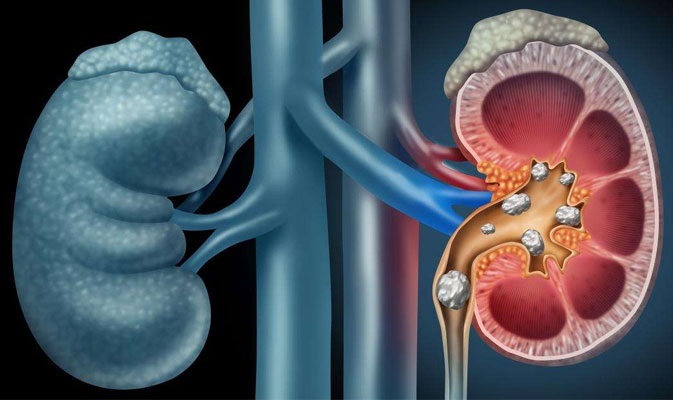Urinary tract infections (UTIs) and kidney stones are both frequent health problems, however they usually share the same symptoms, which can lead to confusion over the diagnosis. Recent research has revealed how kidney stones could increase the chance of UTIs which can further complicate the issue. Knowing the difference between UTI as well as kidney stones as well as knowing the right time to get medical attention is crucial to manage these ailments effectively.
This blog we’ll examine the main distinctions among UTI as well as kidney stones. We will also discuss and how stones can cause UTIs and the times when it is necessary to talk with the doctor.
What Is a UTI?
An infection of the urinary tract (UTI) is a condition that occurs anywhere in the urinary system, such as kidneys bladder, ureters or the urethra. UTIs are typically result from bacterial infection and symptoms can vary from mild to serious.
Common Symptoms of UTI:
- Urinary urges that are frequent and often with minimal urinary output
- Pain or burning sensation in the urinal
- Urine that is cloudy or smells foul
- Pelvic pain
- Urine blood (hematuria) when it is present in serious instances
If not treated, UTIs can spread to the kidneys, which can lead to more serious complications such as Pyelonephritis (kidney infection) which could be life-threatening.
What Are Kidney Stones?
Kidney stones are solid deposits of salts and minerals which develop within the kidneys. They can differ in shape and size, from tiny grains to massive stones that impede urine flow. Kidney stones are often a source of severe discomfort, particularly when they travel through the urinary tract.
Common Symptoms of Kidney Stones:
- Pain that is intense on the lower back, or sides and often radiating into the lower abdomen or the groin
- Urine blood (hematuria)
- A frequent urge to go to the bathroom
- Nausea or vomiting triggered by extreme pain
- Urine that smells foul or cloudy (similar UTI) UTI)
Although both UTIs as well as kidney stones may result in painful urination as well as urine that is bloody kidney stones are typically associated with sharp, stabbing pain particularly in the sides or back.
Kidney Stones and UTIs: The Link Between the Two
It is important to remember kidney stones may increase the chance of UTIs. Stones can block the flow of urine and create a place for bacteria to thrive. When urine gets trapped in the kidneys or bladder the chance of contracting an infection increases. Furthermore, when stones cause irritation to your urinary tract they could cause pain and inflammation and make it easier for bacteria to penetrate the urinary tract.
In fact, those who suffer from kidney stones are at greater risk chance of developing recurrent UTIs. Recent research has shown that kidney stones, in particular large ones or ones which cause urinary blockage can make it more difficult to complete UTI treatment and result in longer healing times.
Kidney Stone vs. UTI: How to Tell the Difference
Although there is a bit of overlap in the symptoms however, there are a few important differences between UTIs and kidney stones:
| Symptoms | UTI | Kidney Stones |
| Pain Location | The pelvic region or the urethra | The lower part of the back and side or the groin (sharp pain) |
| Pain Type | Urinary discomfort or burning | Pain that is intense and stabbing Particularly during movement |
| Urine Appearance | A foul, cloudy or bloody urine | Bloody or cloudy urine |
| Other Symptoms | Frequent urination, urgency | Nausea vomiting, nausea, or discomfort radiating to the abdominal or groin |
UTI symptoms are typically restricted on the bladder, and the lower urinary tract. Kidney stone symptoms can cause more intense pain that may radiate across other parts of the body. If you are experiencing extreme bleeding or pain inside your urine it’s essential to distinguish between the two types of conditions.
When to See a Doctor
Being aware of when you should see the doctor will make a big difference in the treatment you receive and recovery. This is the time to get medical attention:
For UTIs:
- If you are experiencing burning or pain in your the urination process, you should consult your doctor.
- If symptoms become worse even with home remedies (e.g. the frequency of urination, fever or chills)
- If you find some blood in the urine, or when you experience lower back pains, it could indicate an infection of the kidneys
For Kidney Stones:
- If you are experiencing intense painful, sharp pain that doesn’t disappear, then you’re in the wrong place.
- If you notice the presence of blood within your urine, or suffer intense pain while urinating
- If you suffer from nausea or vomiting because of the pain, or you are unable to go to the bathroom
In some instances, UTIs caused by kidney stones could require antibiotics in order to treat the underlying infection, and procedures to get rid of or break them down.
Conclusion
Both UTIs and kidney stones have similar symptoms, such as painful urination as well as blood in the urine, however the severity and intensity of the pain are different. Kidney stones are typically associated with greater pain, which radiates and radiating pain, whereas UTIs tend to be accompanied by discomfort when urinating and the lower abdomen pressure.
Kidney stones can increase the chance of developing UTI which is why it’s important to treat both of them immediately. If you notice symptoms of one or the other, it’s important to see a doctor for a correct diagnosis and treatment strategy.
If you’re not sure if your symptoms are caused by an UTI or kidney stone seeking medical attention at an early stage will help avoid complications and help you find the best treatment.
